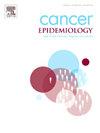Trends and cross-country inequalities in the global, regional, and national burden of gallbladder and biliary tract cancer from 1990 to 2021, along with the predictions for 2035
IF 2.3
3区 医学
Q3 ONCOLOGY
引用次数: 0
Abstract
Background
The global burden of gallbladder and biliary tract cancer (GBTC) is on the rise.
Methods
The incidence, mortality, and disability-adjusted life years (DALYs) of GBTC from 1990 to 2021 were obtained from the Global Burden of Diseases Study (GBD) 2021. The Bayesian Age-Period-Cohort (BAPC) model was also employed to project disease trends for the next 15 years.
Results
In 2021, new GBTC cases observed globally amounted to 216,768, with 171,961 mortality and 3732,121 DALYs. From 1990–2021, a notable surge was recorded in the incidence of GBTC by 101 %, mortality by 74.26 %, and DALYs by 60.45 %. Regions with superior Socio-Demographic Index (SDI) reflected elevated incidence and mortality rates. However, a significant decrease was noticed in the age-standardized incidence rate (ASIR) and age-standardized mortality rate (ASMR). Despite a reduction in health disparities among countries, differences remain. Prognostications predict a continual decline in global ASIR and ASMR through 2035.
Conclusions
The study found that the burden of GBTC in incidences, mortalities, and DALYs has been on the rise, with some correlation with socio-economic development.
1990年至2021年全球、区域和国家胆道癌负担的趋势和跨国不平等,以及对2035年的预测
全球胆囊和胆道癌(GBTC)负担呈上升趋势。方法从全球疾病负担研究(GBD) 2021中获取1990 - 2021年GBTC的发病率、死亡率和残疾调整生命年(DALYs)。贝叶斯年龄-时期-队列(BAPC)模型也被用于预测未来15年的疾病趋势。结果2021年,全球新发GBTC病例为216,768例,死亡171,961例,死亡死亡3732,121例。从1990年至2021年,GBTC的发病率显著增加了101 %,死亡率增加了74.26% %,伤残调整生命年增加了60.45 %。社会人口指数高的地区反映出较高的发病率和死亡率。然而,年龄标准化发病率(ASIR)和年龄标准化死亡率(ASMR)显著下降。尽管各国之间的健康差距有所缩小,但差异依然存在。预测预测到2035年全球ASIR和ASMR将持续下降。结论本研究发现,GBTC的发病率、死亡率和DALYs负担呈上升趋势,与社会经济发展有一定的相关性。
本文章由计算机程序翻译,如有差异,请以英文原文为准。
求助全文
约1分钟内获得全文
求助全文
来源期刊

Cancer Epidemiology
医学-肿瘤学
CiteScore
4.50
自引率
3.80%
发文量
200
审稿时长
39 days
期刊介绍:
Cancer Epidemiology is dedicated to increasing understanding about cancer causes, prevention and control. The scope of the journal embraces all aspects of cancer epidemiology including:
• Descriptive epidemiology
• Studies of risk factors for disease initiation, development and prognosis
• Screening and early detection
• Prevention and control
• Methodological issues
The journal publishes original research articles (full length and short reports), systematic reviews and meta-analyses, editorials, commentaries and letters to the editor commenting on previously published research.
 求助内容:
求助内容: 应助结果提醒方式:
应助结果提醒方式:


